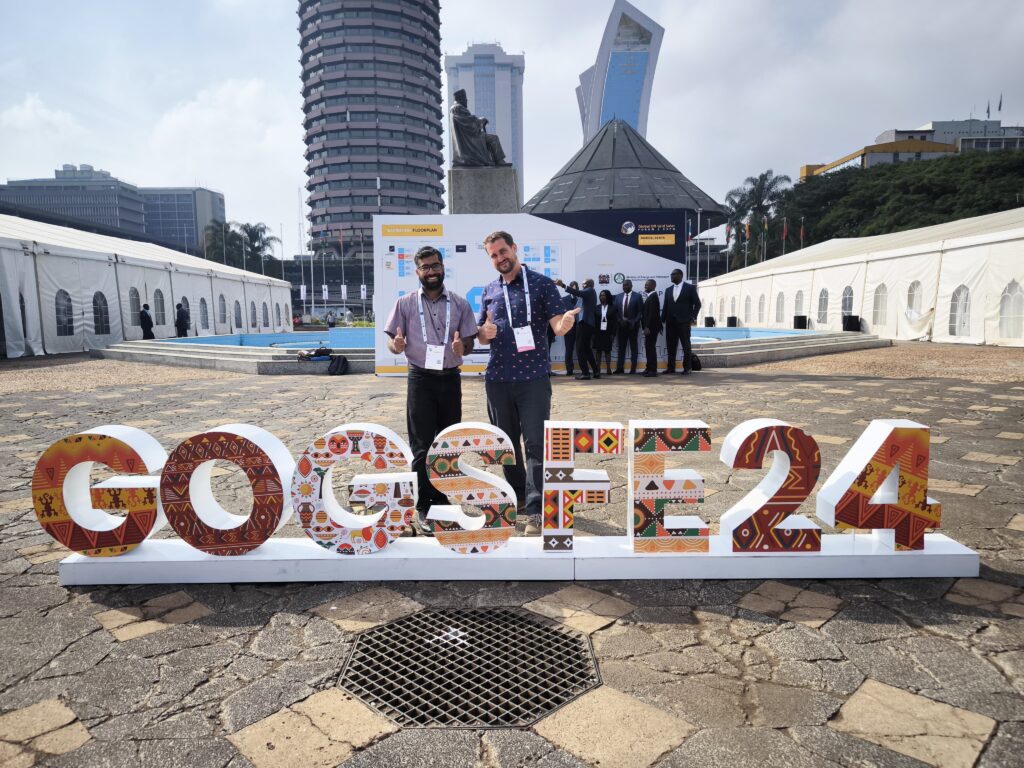
We had quite the experience attending the Global Off-grid Solar Forum and Expo (GOGSFE) in Nairobi, Kenya (8th-10th October). Hosted biennially by the Global Off-grid Lighting Association (GOGLA), it is the largest forum and expo for the off-grid solar sector. It is a major event in the sector’s calendar and has long been a valuable opportunity for government officials, investors, donors, manufacturers and distributors to network, plan and negotiate. For us as researchers, it was an important site for ethnographic research – a chance to closely observe a wide range of influential actors and their discourses about energy poverty and how off-grid solar, distributed through markets, is a key solution to address it.
We sat in on a wide range of sessions across these three days – ranging from the broad state of the sector to more specific aspects of energy policy, financing, impact and technological innovation. Alongside the sessions hosted at the forum was an expo that featured a wide range of solar products, including an impressive array of productive use appliances for solar such as water pumps, coffee mills and freezers.
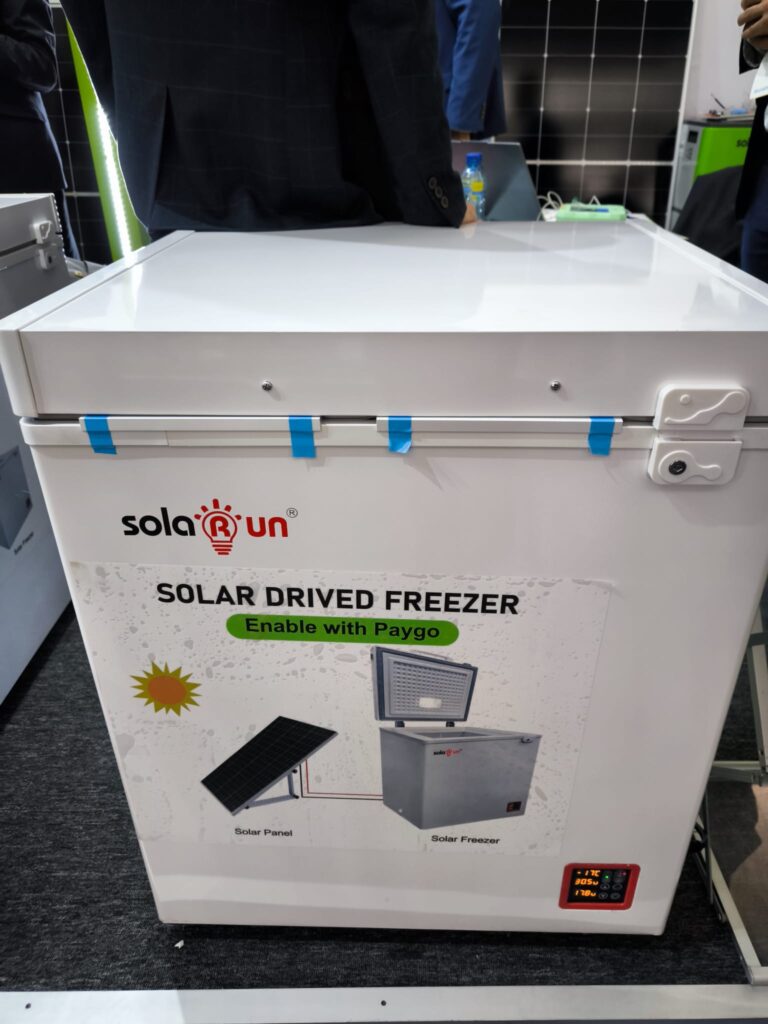
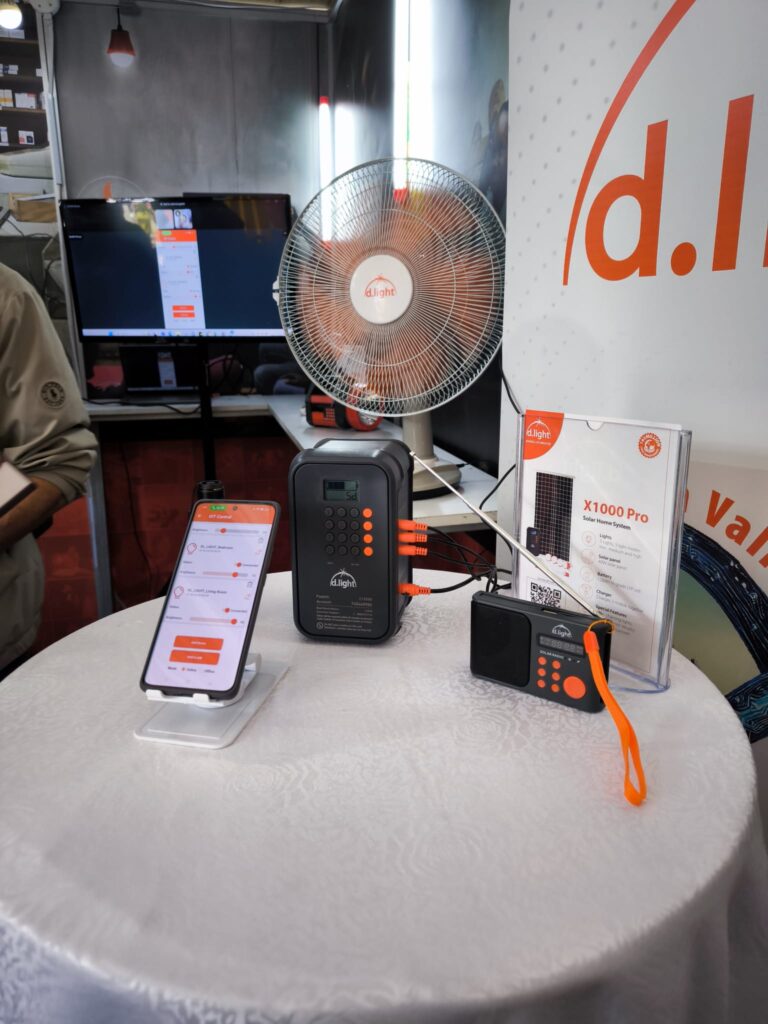
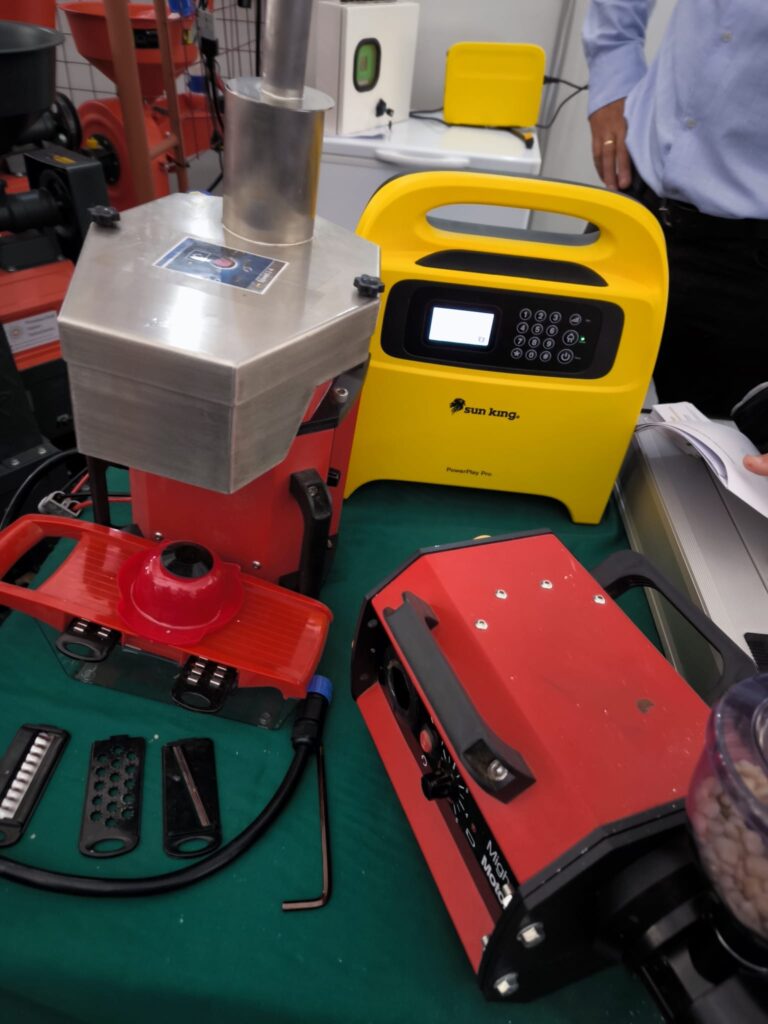
To an extent, the impressive scale of the displays and the event’s production values belied the precarious state of the off-grid solar market. Indeed, this was impressed upon us from the opening plenary itself with the CEO of GOGLA and a World Bank Director outlining how broader efforts to address energy poverty, and the state of the off-grid solar sector, were not faring well. In particular, they said that:
a) Efforts to achieve universal access to electricity by 2030 were considerably off track, with progress over the last decade being outstripped by population growth.
b) That ‘historic’ levels of investment were necessary to push towards universal access, a total of $21B, of which over $9B would be to subsidise access for households that are poor and ‘hard to reach’.
c) That sales in the sector were stagnating due to a range of financial factors such as high debt levels within firms, currency devaluations and high levels of inflation.
It was against this rather dire context that the forum’s proceedings focused on a range of topics through the prism of “Mission 300”, a reference to the goal of 363 million people being served by solar home systems, 44% of the estimated 660 million people living without access, to electricity 85% of whom are situated in Sub-Saharan Africa. The sessions across the 3 days covered a lot of ground, covering topics such as public policy to support off-grid solar adoption, investment in last-mile distributors (especially alternatives to debt), performance metrics, and various productive uses of renewable energy e.g. irrigation, cooling and milling. There was, overall, a sense of a sector yearning for new waves of investment and new models/approaches to revive stagnating sales growth – awkwardly straddling the line between assertions about ‘profitable’ markets and appeals for subsidy programs to distribute solar to the ‘hard to reach’.
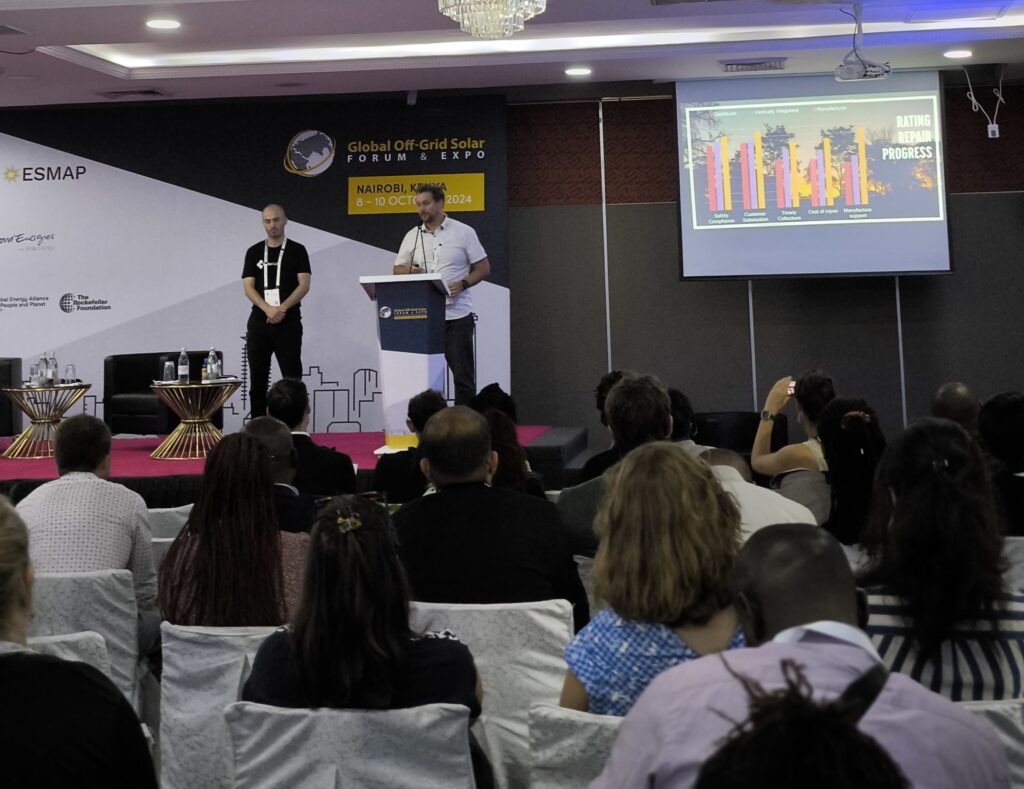
We didn’t just sit in on sessions though, we co-presented our State of Repair Report on Day 3 with Solar Aid! Dr Paul Munro and Jamie McCloskey (SolarAid) presented insights from a cross-sector survey to highlight the current dynamics around the repair of these products, identify key challenges and offer recommendations to improve the sustainability of off-grid solar products. The session was well-received, with the off-grid solar repair being foregrounded and acknowledged as a critical sustainability issue for the sector in a lively session on “Last Mile Repair” on Day 2.
Indeed, both sessions surfaced the tensions that exist between distributors and manufacturers of off-grid solar products on the subject of repair – the former expressing frustration over durability, restrictive product designs and a lack of spare parts to provide timely and effective repair services for their customers. Meanwhile, manufacturers in the session pointed to the cost of managing large inventories of spare parts and distributing them and concerns about the implications of more accessible product designs for their intellectual property. Suffice it to say, the debate about where the responsibility for repair lies and how it will be financed is live in the sector! Ideas such as a “Repairability Index” to hold manufacturers accountable, standardisation of parts e.g. batteries, and collective purchasing of spares are being discussed but are still nascent. We hope to track these developments across our work within the sector.
As researchers who have been researching the off-grid solar sector for several years, attending GOGSFE was a valuable opportunity to get first-hand insight into the current state and outlook for the sector. For us, a key takeaway concerning repair is its vital role in maintaining connections at ‘the last mile’. Efforts to address energy poverty, as evidenced through initiatives like “Mission 300” continue to focus on ambitious statistical goals and measure progress through sales figures within markets. In the midst of this, a focus on repair helps us ask questions about the quality of access that they receive and how it can be sustained.